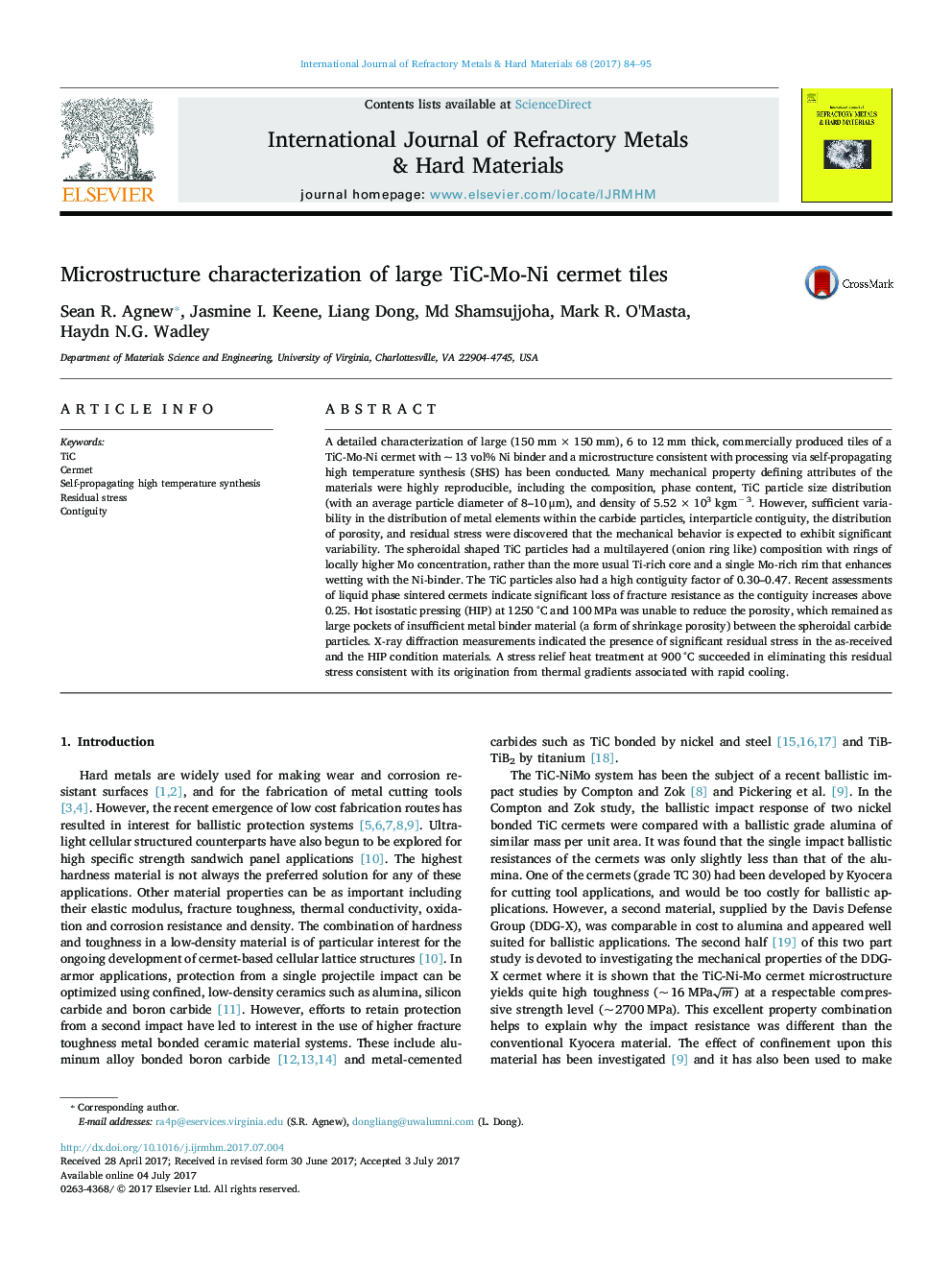| Article ID | Journal | Published Year | Pages | File Type |
|---|---|---|---|---|
| 5457928 | International Journal of Refractory Metals and Hard Materials | 2017 | 12 Pages |
Abstract
A detailed characterization of large (150 mm Ã 150 mm), 6 to 12 mm thick, commercially produced tiles of a TiC-Mo-Ni cermet with ~ 13 vol% Ni binder and a microstructure consistent with processing via self-propagating high temperature synthesis (SHS) has been conducted. Many mechanical property defining attributes of the materials were highly reproducible, including the composition, phase content, TiC particle size distribution (with an average particle diameter of 8-10 μm), and density of 5.52 Ã 103 kgmâ 3. However, sufficient variability in the distribution of metal elements within the carbide particles, interparticle contiguity, the distribution of porosity, and residual stress were discovered that the mechanical behavior is expected to exhibit significant variability. The spheroidal shaped TiC particles had a multilayered (onion ring like) composition with rings of locally higher Mo concentration, rather than the more usual Ti-rich core and a single Mo-rich rim that enhances wetting with the Ni-binder. The TiC particles also had a high contiguity factor of 0.30-0.47. Recent assessments of liquid phase sintered cermets indicate significant loss of fracture resistance as the contiguity increases above 0.25. Hot isostatic pressing (HIP) at 1250 °C and 100 MPa was unable to reduce the porosity, which remained as large pockets of insufficient metal binder material (a form of shrinkage porosity) between the spheroidal carbide particles. X-ray diffraction measurements indicated the presence of significant residual stress in the as-received and the HIP condition materials. A stress relief heat treatment at 900 °C succeeded in eliminating this residual stress consistent with its origination from thermal gradients associated with rapid cooling.
Related Topics
Physical Sciences and Engineering
Materials Science
Metals and Alloys
Authors
Sean R. Agnew, Jasmine I. Keene, Liang Dong, Md Shamsujjoha, Mark R. O'Masta, Haydn N.G. Wadley,
